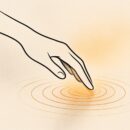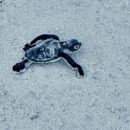Welcome again, Kenyans: the election matatu race is on
There is a short history lesson l like to provide for our youngsters in Kenya, every time we approach a general election.
In the 1980s, Daniel arap Moi and Mwai Kibaki led the same government. In the 1990s and in 2002, they were on opposite sides, and vociferously so. In 2007, they were together again, praising each other’s statesmanship.
In the 1980s, Moi and Kibaki were leading the government that was routinely locking up Raila Odinga. In the 1990s, Moi, Kibaki and Raila were all on different sides. Before 2002, Raila was with Moi against Kibaki. In 2002, Raila was with Kibaki against Moi and his chosen successor, Uhuru Kenyatta. In 2005 Raila led the constitutional referendum vote against Kibaki, with Moi’s support. In 2007, Raila was Kibaki’s main challenger for the presidency. Moi was on Kibaki’s side.
In 2002, Uhuru Kenyatta was with Moi, pitted against Kibaki and Raila. In 2005, he was with Raila but against Kibaki. In 2007 he left Raila and joined the Kibaki camp. In 2013 Uhuru is pitted against Raila.
In the 1990s, Kalonzo Musyoka was firmly with Moi and Uhuru, fighting Raila and Kibaki. In 2002, he was with Raila and Kibaki, fighting Moi and Uhuru. In 2005, he was with Moi, Raila, and Uhuru, fighting Kibaki. In 2007, he famously abandoned Raila and joined the Kibaki government. In 2013 he has returned to Raila’s side.
In the 1990s, Musalia Mudavadi was firmly with Moi, Kalonzo and Uhuru, fighting Raila and Kibaki. In 2002 he was with Moi and Uhuru against Raila, Kalonzo and Kibaki. In 2005 he was with Raila, Kalonzo, Uhuru and Moi, fighting Kibaki. In 2007, he was firmly with Raila, fighting Kalonzo, Kibaki, Uhuru and Moi. In 2013, he is back with Moi but fighting Raila and Uhuru.
In the 1990s, William Ruto was a stalwart of the Moi regime with Uhuru, Musalia and Kalonzo, fighting Raila and Kibaki. In 2007 he was by Raila and Musalia’s side, fighting Kibaki, Uhuru and Kalonzo. In 2013 he is by Uhuru’s side, fighting Raila, Kalonzo and Musalia.
Do I need to carry on? You get the picture, young ones. This is the matatu race called Kenyan politics, and it is repeated every five years.
Every so often, a few leaders climb aboard a matatu together and paint it in bright colours. They join other equally loud and garish matatus in a race around a circular race track. The music begins. After some time, the matatus come back round. Race viewers now note that some leaders have jumped to a different matatu with different fellow passengers. Nevertheless, they are waving at you with great gusto, and you are waving back.
If certain people can help you win the matatu race, you pull them on board. If they can’t, you push them off, or jump onto another matatu yourself. When you are thrown off, you run alongside, throwing stones until you get tired. Then you sit down and wait. Another matatu will be along soon.
There is no adherence to principle, no kinship with an abiding ideology, no consistency in direction to be seen. Parties, alliances, coalitions, manifestos and policies are all spectral.
In Kenya, we say, “but that’s politics” and accept it as normal behaviour.
For as long as our politics remains a matatu race, we will never develop better vehicles and join the real race – the race of rapid development. The race that actually improves us is the only one worth cheering. Everything else is an irrelevant sideshow.
But in Kenya, the sideshow is the only show in town.
I have no candidate in the race, no axe to grind. I expect even today’s newcomers to become this way tomorrow. Your vote is your choice. But do please understand how crazy this race has become. I have written this history lesson before, and I expect to write it again. See you here after five years.

Buy Sunny Bindra's new book
The X in CX
here »
Popular Posts
- You are who you hang out withSeptember 28, 2025
- Why your mother was right about your anxietyOctober 12, 2025
- The balance sheet that mattersOctober 5, 2025
- Use AI, but don’t lose youOctober 19, 2025
- Born knowing the waySeptember 21, 2025















